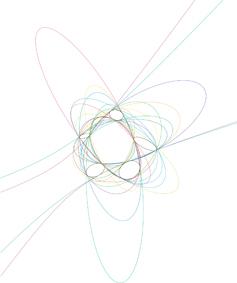At the outset of the second half of the nineteenth century, geometers belonging to the so-called “synthetic tradition” began discovering the properties of new sorts of geometrical objects: systems or sheaves of curves. Shortly thereafter emerged enumerative questions, such as that of finding the number of (coplanar) conics tangent to five given conics. As the first attempts to build theory that would systematically answer such questions were devised by French geometers Chasles and his pupil De Jonquières, profound conceptual disagreements quickly arose between them, culminating in a public, all-out controversy during the years 1866–1867. In particular, one key formula of Chasles’ was therein discussed, which would be both proved and refuted by several mathematicians until the end of the century. These fierce discussions involved mathematicians from various countries and also from various “mathematical laboratories.” A satisfying resolution of this uneasy state of the discipline only emerged towards the end of the century, through the acceptance not only of the conventional nature of what makes a geometrical statement generally true, but also of the relation between geometrical objects and algebraic forms.
In this project, we set out to study the shaping of different forms of “geometrical generality,” through an investigation of the linguistic and textual practices of the mathematicians involved in this historical episode. We examine the fabrication of general, mathematical facts within the texture of the discourse itself as well as the role of the algebraic and symbolic notations in the expression of these geometrical results.

